You’re probably already familiar with the physical, mental, and emotional benefits of being out in nature. But research shows that nature also has an important role in healthy child development. We live in a world where compassion and empathy are exhausted resources. In a world where violence and dissension are a daily reality, how do we, as parents and educators, raise kinder kids and build a better future? One way is to help them connect with nature early. Here’s why this is critical, why it makes such a difference, and how to do it with your kids no matter their age.
Why Kids Need Nature Now
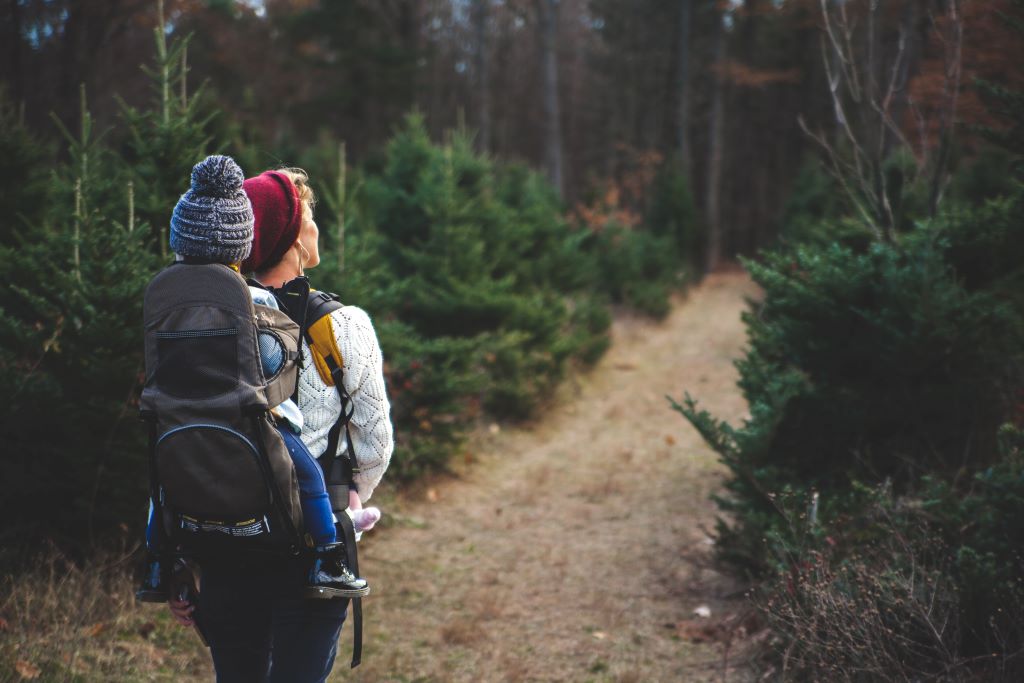
According to the National Wildlife Federation, the average child in the US spend as little as 30 minutes outdoors each day. In fact, this phenomenon has a name: nature deficit disorder. As a result, kids are suffering from higher rates of obesity as well as mental disorders. And on an emotional level, they’re lacking the experiences needed to build important traits like compassion, empathy, curiosity, accountability, and altruism.
How Connecting with Nature Helps Kids
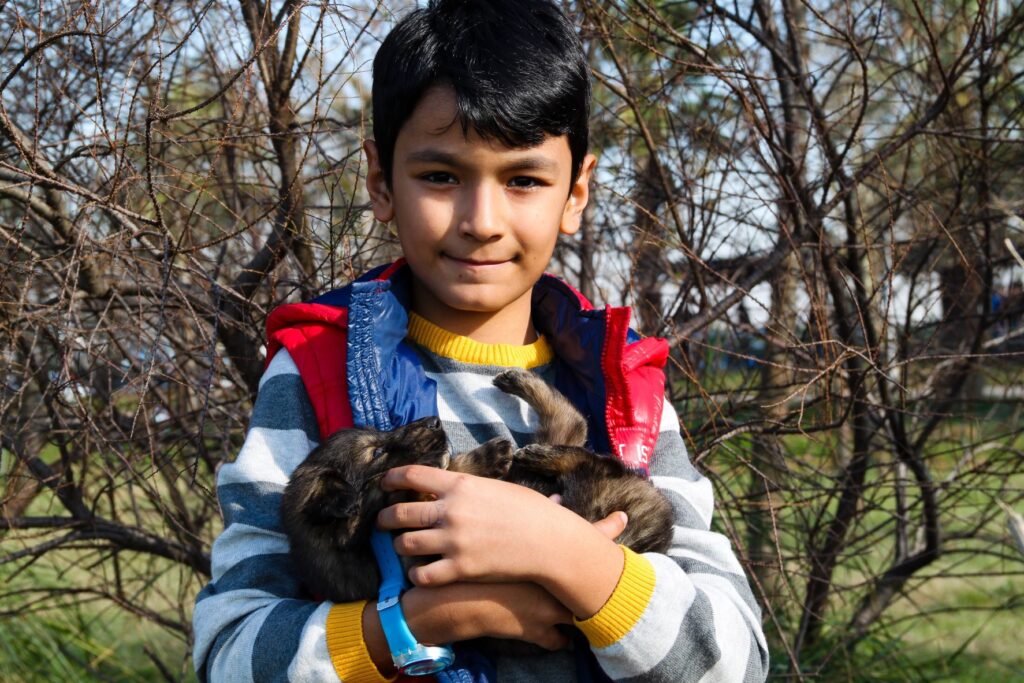
It builds empathy. In nature, children experience the animal kingdom in a powerful, sensory way. They get to see firsthand how animals care for their young, how they communicate, and how they interact with the natural ecosystem as a whole. It also helps foster a child’s love of plants and animals, and builds awareness of their own role in the ecosystem—important steps in empathy development. And since empathy allows for us to feel how others feel, it’s an important ingredient in self-awareness, and a necessary step for building a better world, socially and environmentally.
It promotes connection and community. Spending time outdoors not only helps kids connect to nature—it helps them connect to each other. Research shows that young ones spending time in nature enjoy better relationships with peers, parents, and teachers as a result.
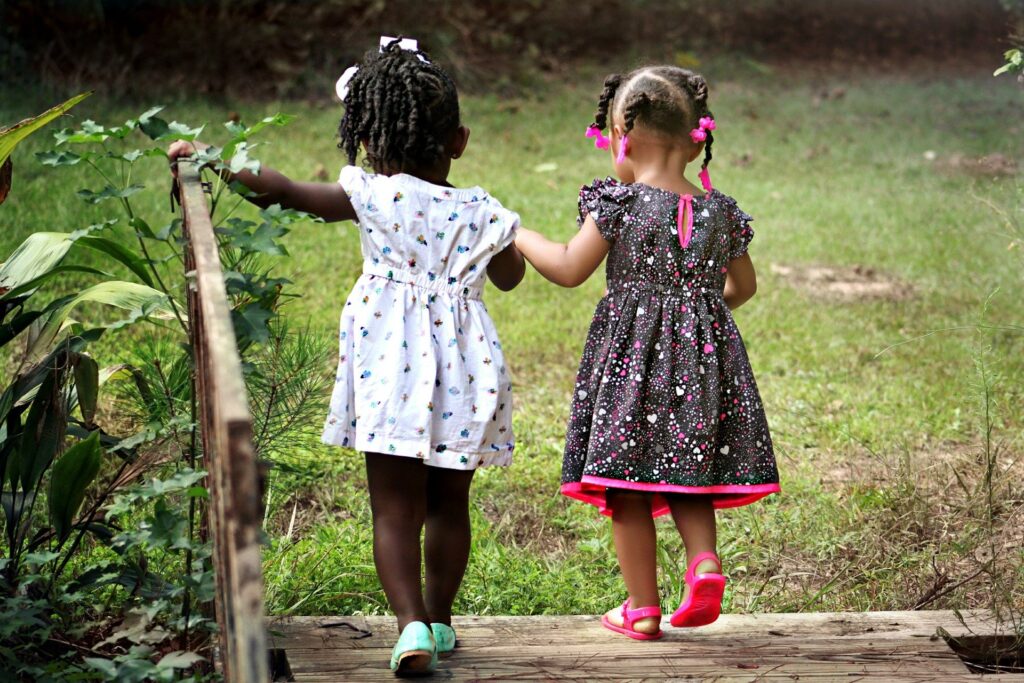
It teaches them stewardship. Watching wildlife in all its wonder teaches children the delicate balance of nature. From observing their life cycles and how factors like weather and human interference affect animals and plants, young ones get a sense of the earth’s wonders. It also shows them how our actions affect the natural world, and why it’s so important to care for it properly.
Nature’s Effect on Children
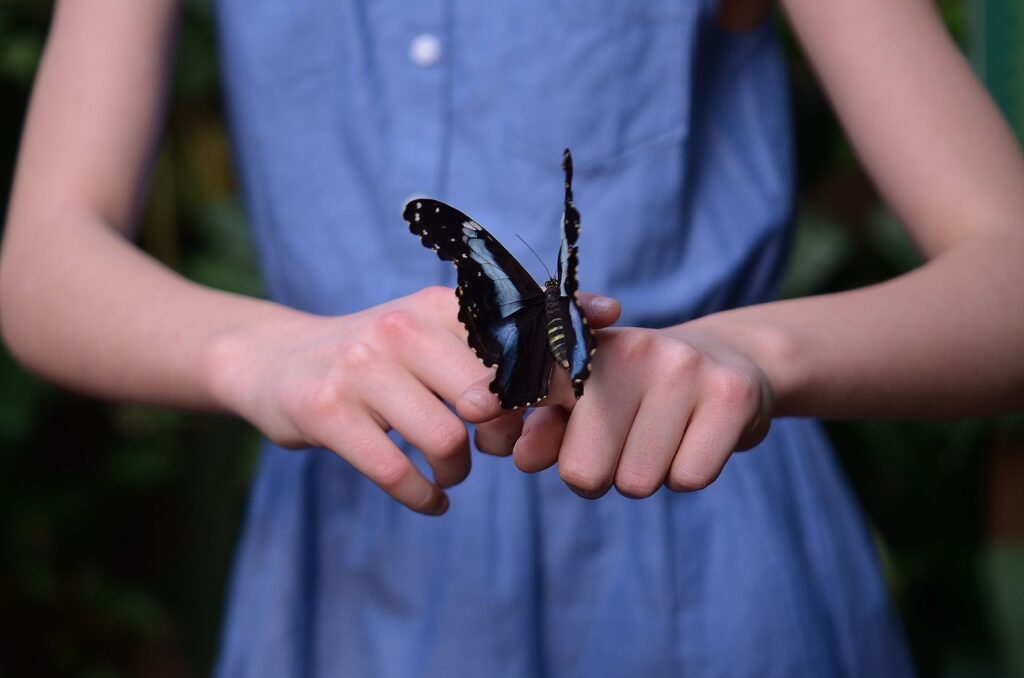
This is just a small portion of the large body of research available touting the proven benefits of nature on child development:
- Spending time outdoors is shown to reduce ADHD symptoms in children.
- Children learning in outdoor environments have shown an increase in imaginative play and positive social interactions.
- Exposing children under age 11 to nature has been linked to them becoming more environmentally responsible as an adult.
- In one study, the more time children spent in green spaces was linked to higher cognitive development scores.
- Another study found that 79% of children reporting better relationships with classmates after spending time in a natural habitat.
How to Help Kids Explore Nature
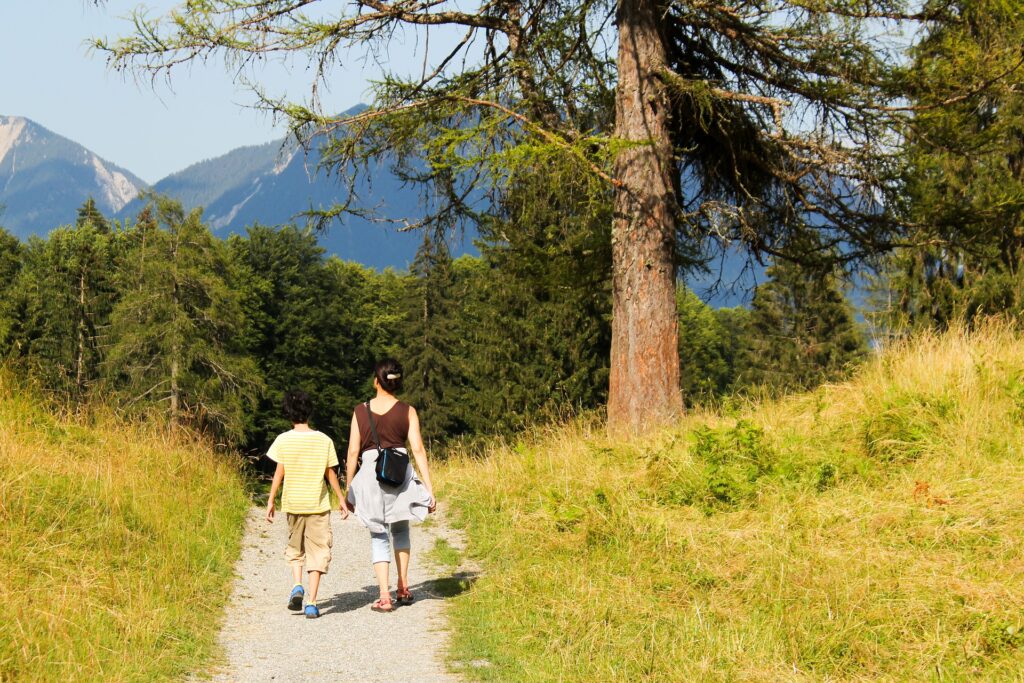
Go for a hike or a nature walk
The easiest and most immediate way to get kids outside? Go for a walk! Why not explore local trails, parks, and recreational areas with your young naturalists? Make it more interactive by turning it into a game. Set up a scavenger hunt. Collect shells, rocks, feathers, and other natural elements (but be sure not to disrupt the environment or break any laws while doing so!). There are so many ways to turn a nature walk into a world of wonder for you and your kids.
If you’re local to the Big Bear area, bring the kids and join us for a free guided nature walk around the Big Bear Valley.
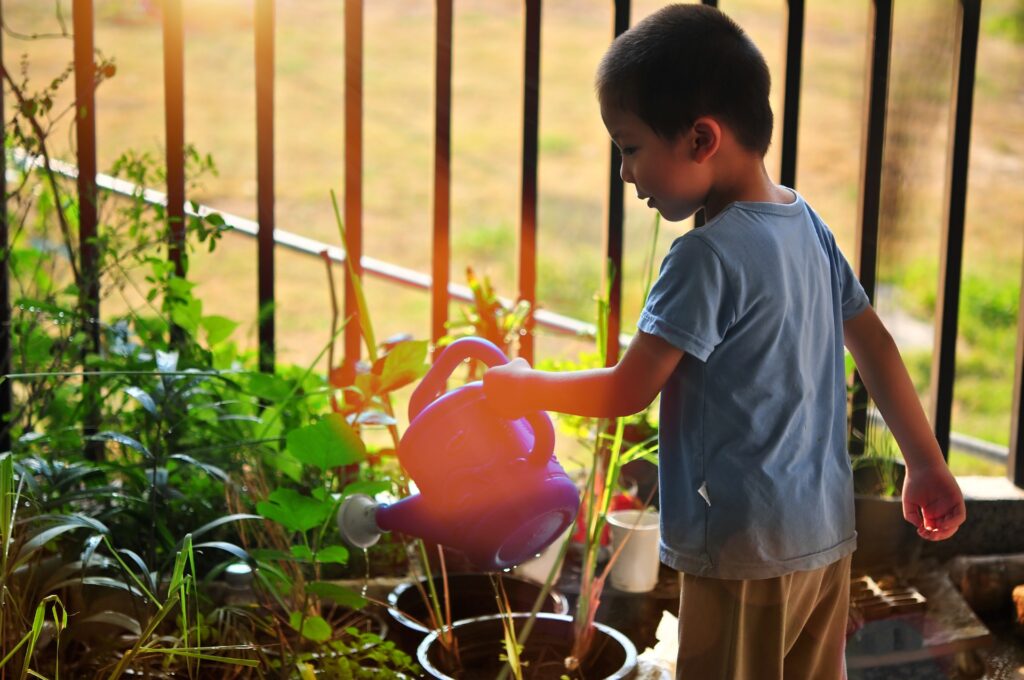
Ask for help in the garden
Did you know that the microbes in soil act as nature’s antidepressant, making you feel happier and more relaxed? Invite your kids to benefit from this same “dirt therapy” by working on a gardening project together. Something as simple as planting a few pots, painting terra cotta planters, and turning old boots and other household items into upcycled planters can boost a child’s sense of accomplishment and encourage future outdoor activities.
Introduce them to the joys of birdwatching
Bring nature into your own yard or garden with a bird feeder or two. Want to give your child an up-close-and-personal view of your backyard birds? Hang a feeder outside your living room, or their bedroom window so they can watch birds feed right in front of their eyes.
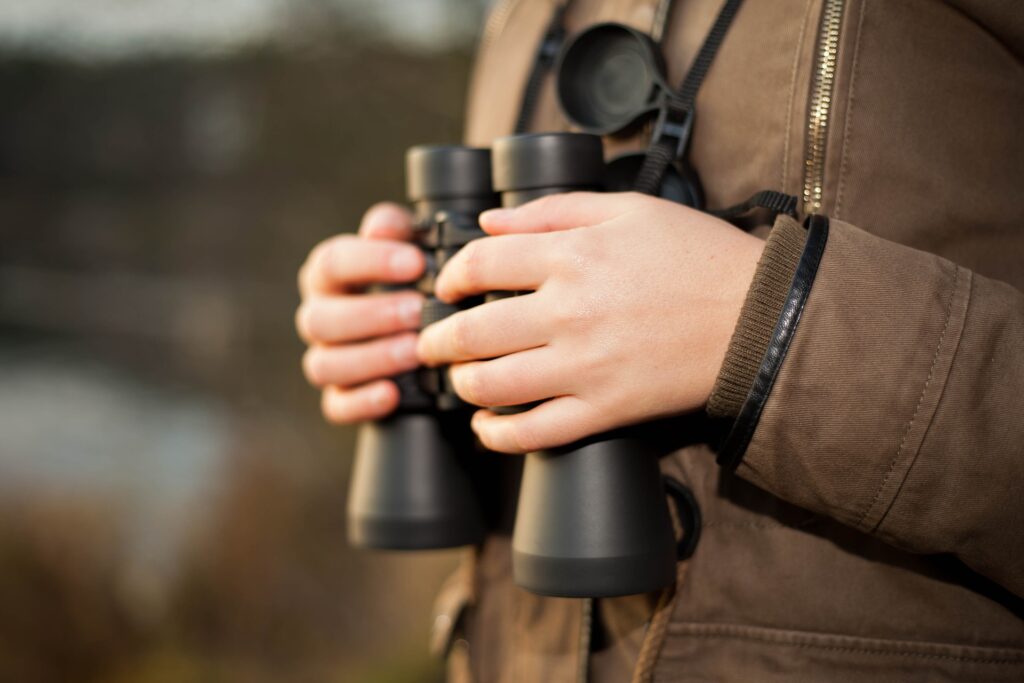
Teach them about nature while out in it
There are so many tools to take out in nature that will help your kids learn. For instance, Peterson’s Young Birder’s Guide is formatted specifically for kids, with color photos of birds, maps, and interactive elements. Get it on its own or as part of our Young Birders Gift Set. This curated set includes binoculars, a bird call, and fun swag to get your kids psyched about the outdoors. For younger children, we also have a Toddle into Nature Gift Set, with toys to keep them entertained while learning about nature.
Bring the Whole Family on a Chirp Bird Walk
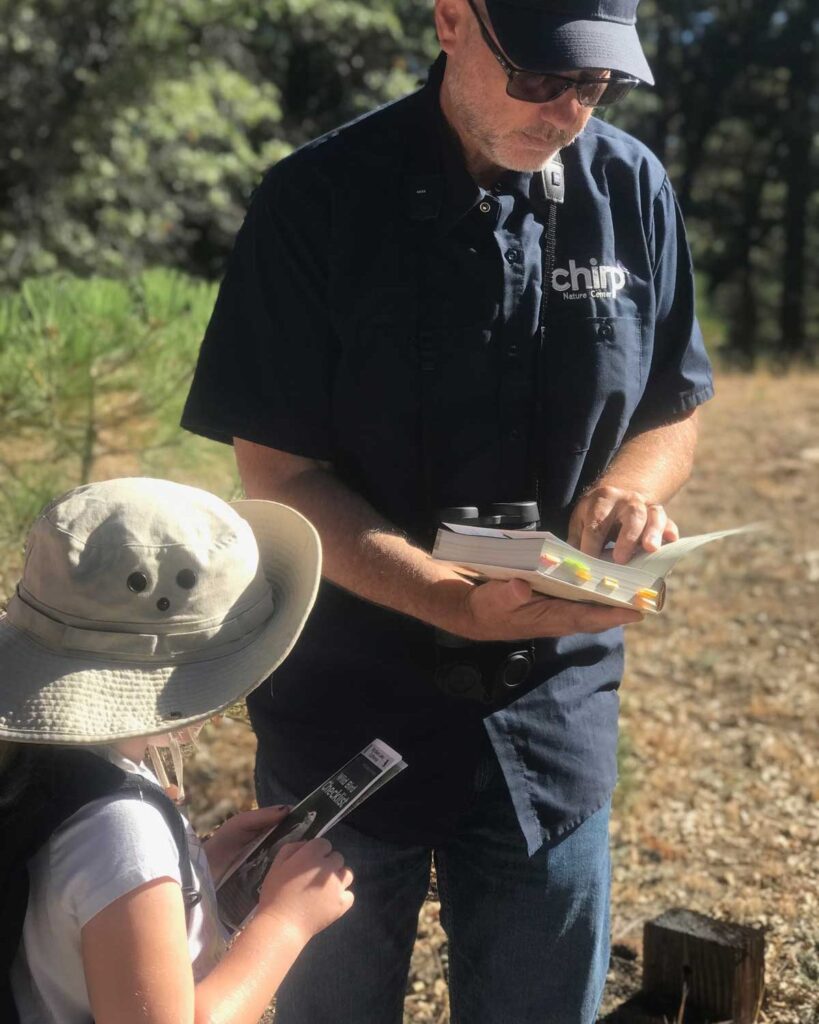
Learn about local birds and enjoy a beautiful day with your family exploring the beauty of the Big Bear Valley! Our monthly Bird Walks guide you through some of the most popular birdwatching spots in the nation. We also offer a free wild bird checklist that you and your family can reference when identifying the birds. Bring your family (including little ones) along and explore with us. Our next walk is scheduled for May 7th. Can’t make it? Check out our recorded Bird Walks on the Chirp YouTube channel!


